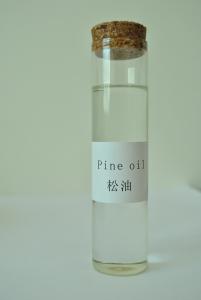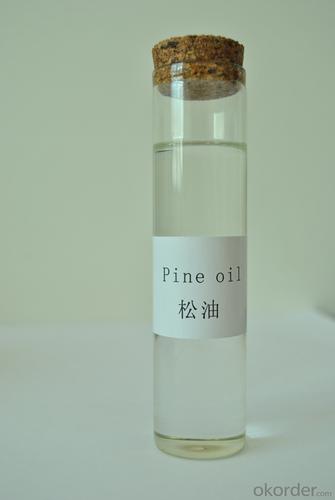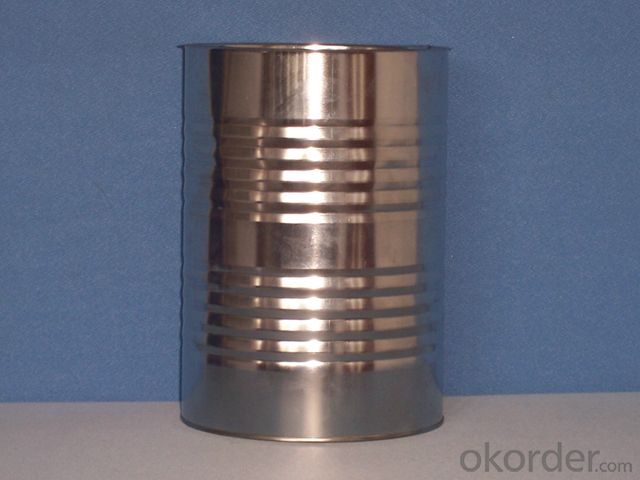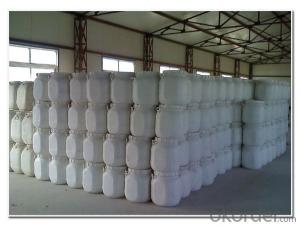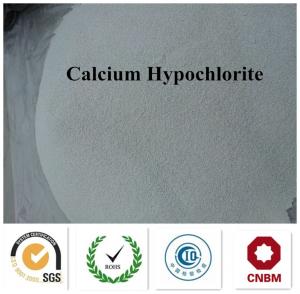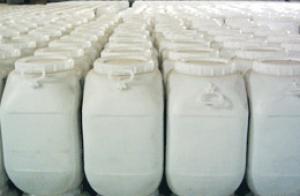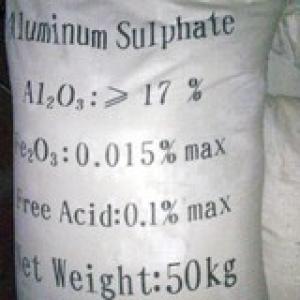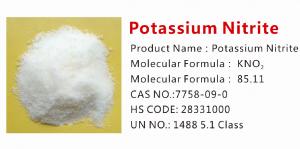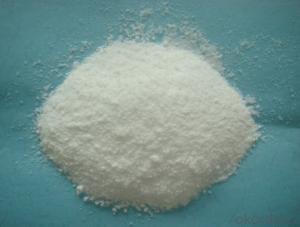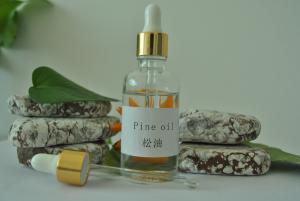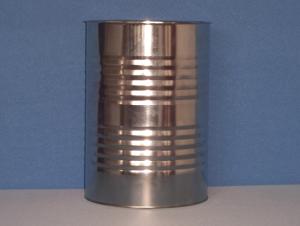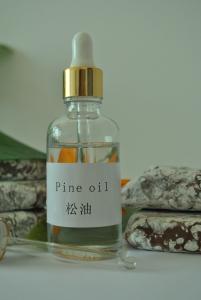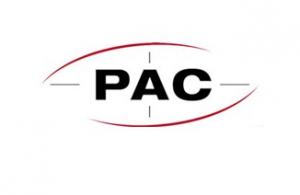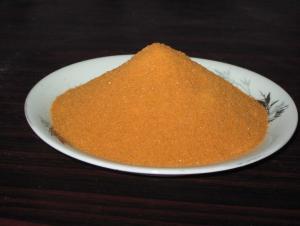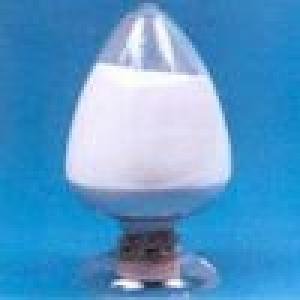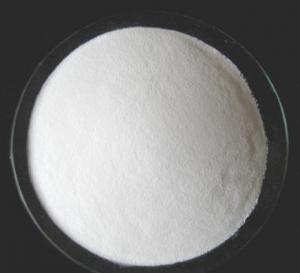Pine Oil with Good Quality and High Purity and Strong Packing
- Loading Port:
- Tianjin
- Payment Terms:
- TT or LC
- Min Order Qty:
- 17.6
- Supply Capability:
- 3000 m.t./month
OKorder Service Pledge
OKorder Financial Service
You Might Also Like
1. Structure of Pine Oil Description:
CAS NO.: 8002-09-3
MF: C10H17OH
PURITY:
Purity: 45% 50% 70% 80%
Packing&Delievery: 170kg/iron drum (Capacity of per 20'FCL: 80 drums,totally 13.6mt per container)
All year Delievery
2. Main Features of Pine Oil:
The pine oil is widely used in the flotation of various metallic and non-metallic minerals. It is mainly used in the flotation of various sulfide ores,such as lead,copper,zinc,and iron sulfide,and non-sulfide minerals. It exhibits some collecting properties,especially for readily floatable minerals such as talc,graphite,sulphur,molybdenite and coal etc.The froth produced by pine oil is more persistent than that produced by other frothers.As a good foaming agent of non-ferrous metals,has been widely used both at home and abroad,with low foam,high concentrate grade,strong adaptability,fine and dense foam and the foaming speed and defoaming speed is fast,easy operation,no impact on subsequent flotation and is appropriate the separation of polymetallicore.
3.Pine Oil Images


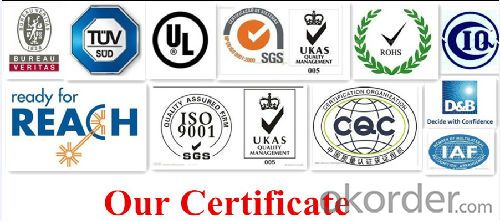
4.Pine Oil Specification
Item | 50% | 65% | 70% | 85% |
Appearance | Slight-yellowish or brown-yellowish oil-shape liquid. | |||
Color and state( Max). | 6 | 6 | 6 | 6 |
Content of water (Max). | 0.7 | 0.7 | 0.7 | 0.7 |
Total acid value (Min) | 50 | 65 | 70 | 85 |
Gravity | 0.866 | 0.90-0.92 | 0.90-0.92 | 0.92-0.94 |
Distillation range(°C) | 168-230°C | 170-225°C | 170-225°C | 190-225°C |
Impurities(MAX) | 0.5% | 0.5% | 0.5% | 0.5% |
PH value | 5-7 | 5-7 | 5-7 | 5-7 |
Impurity( Max). | 0.5 | 0.5 | 0.3 | 0.3 |
5.FAQ
1)How many tons does your factory can supply each moth?
30000tons/month
2)How to quarantee the quality of the products?
you can arrange SGS&BV or other quality inspection.
3)How many days you need to pepare the cargo after we made the order?
- Q: Where are the parts of the bryophyte absorb water and inorganic salts?
- Moss moss moss, moss Gang, moss root through the fake root absorption, that is, the use of cell penetration technology, moss Gang has evolved out of the root, so you can directly through the relatively low roots to absorb Oh
- Q: Why is the residue after burning known as coarse ash? And inorganic salt content What is the difference
- There is no essential difference, the measurement method is different, so the result is different, the former is the burning method, which is the chemical method or instrument method
- Q: Which foods contain calcium-containing inorganic salts
- Calcium and inorganic salts are two concepts, bother you to go back and turn the chemical book and then ask, inorganic salt can eat
- Q: What are the important physiological effects of inorganic salts in cells
- Maintain the normal life of the organism
- Q: Cells are composed of water and inorganic salts or by organic matter and none
- There are, but the water accounted for most of the inorganic salt to maintain cell acid and alkali balance;
- Q: What substances can detect inorganic salts
- Chemistry or creatures
- Q: Which minerals is richest source of Inorganic Salts ?
- Minerals are inorganic salts - eg.potassium nitrate - absorbed by plants from soil - a good source of inorganic nitrogen and potassium.
- Q: Calcium is not an inorganic salt
- Calcium salt is determined whether it is inorganic salt depends on its acid, if it is organic acid synthesis of calcium salt is organic salt, if it is inorganic acid synthesis of calcium salt is inorganic salt. The main basis for determining the inorganic salts is whether or not organic reactants are involved in the formation process.
- Q: I am told to find which bottled mineral water brands contain the most mineral salts.But im not sure if the mineral salt here is talking about the common table salt (Sodium Chloride) or the chemical salt (ionic compounds such as sulfate and chloride) or the whole list of dietary minerals (potassium, chlorine, calcium, magnesium, ect.) I normally think it is just the table salt but im afraid I might get wrong. So what is the exact definition?
- Definition Of Mineral
- Q: therefore indigestible..that I should look for organic plant based trace mineral compounds..anyone care to comment?
- Inorganic does not mean indigestible, but plant derived trace minerals are the best form to take because they have been broken down by soil micro-organisms and predigested by plants, making them much more bioavailable than minerals which have not. I use Liquid Life trace minerals. EDIT: The best source would definitely be diet except that our soils have had a whopping 85% mineral depletion over the past hundred years thanks to over-farming. Your great grandma's bowl of spinach had eight times the nutrition that the bowl you eat today has.
Send your message to us
Pine Oil with Good Quality and High Purity and Strong Packing
- Loading Port:
- Tianjin
- Payment Terms:
- TT or LC
- Min Order Qty:
- 17.6
- Supply Capability:
- 3000 m.t./month
OKorder Service Pledge
OKorder Financial Service
Similar products
Hot products
Hot Searches
